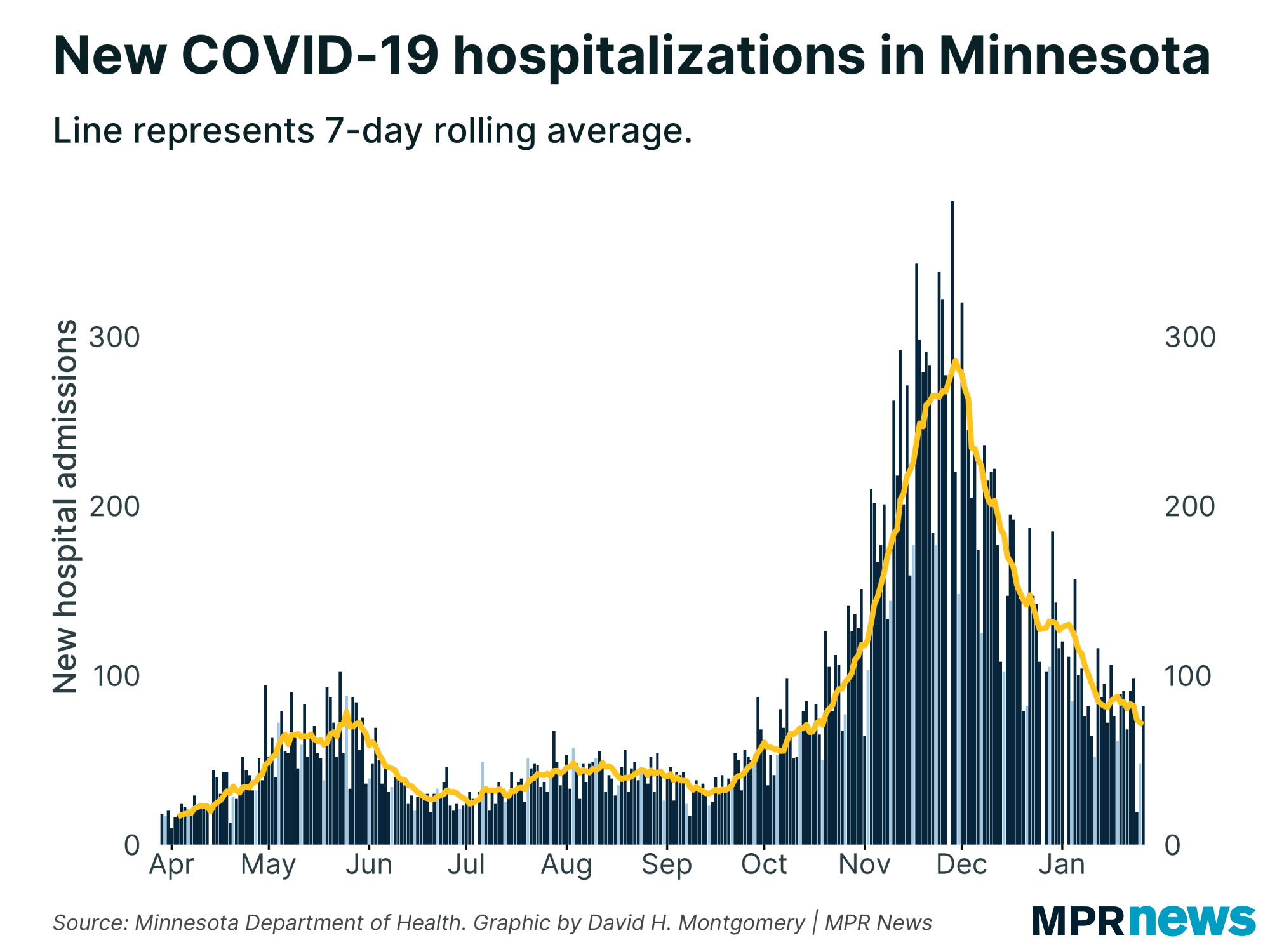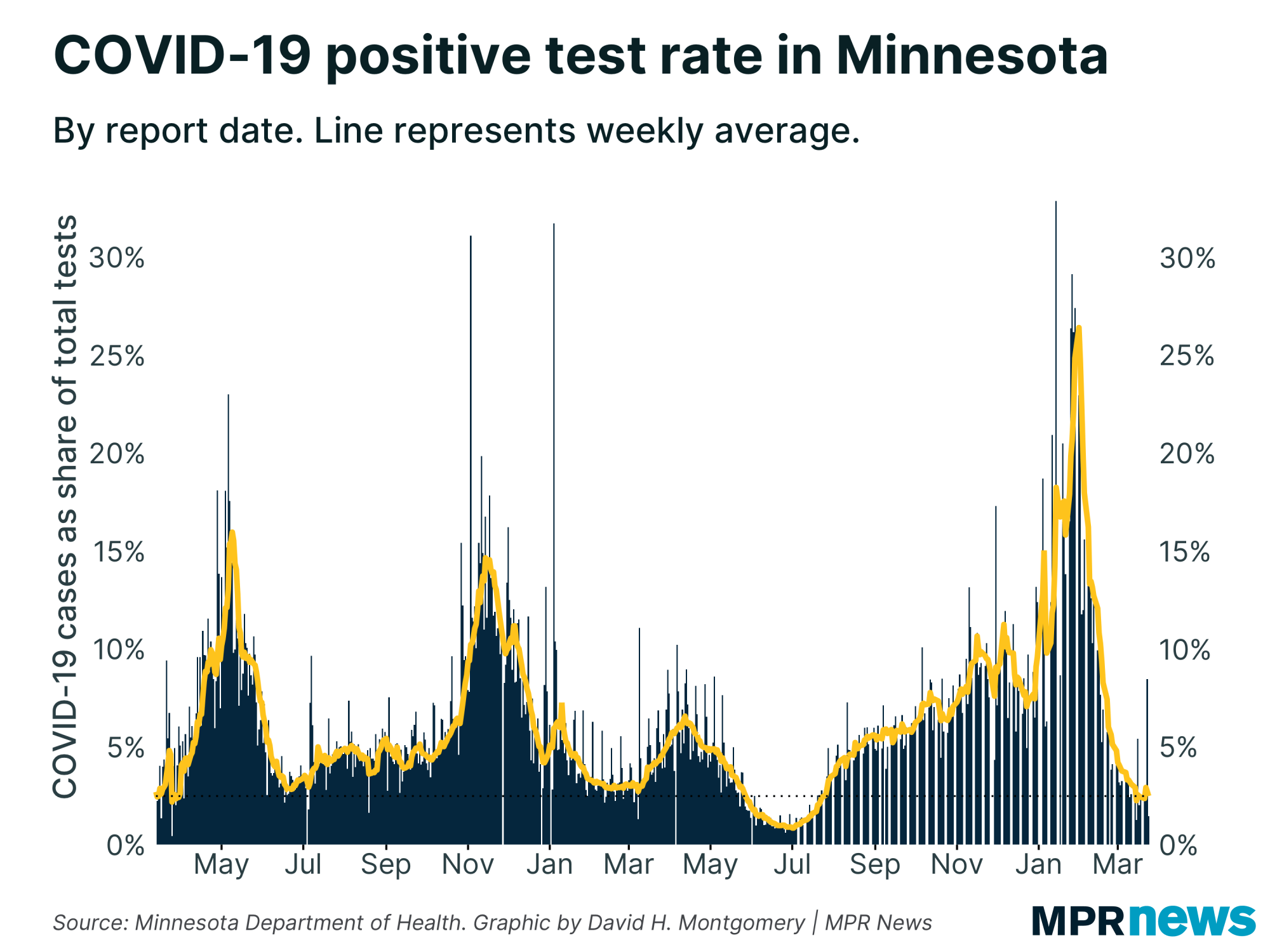Dec. 8 update on COVID-19 in MN: 22 more deaths; 3K new cases

Go Deeper.
Create an account or log in to save stories.
Like this?
Thanks for liking this story! We have added it to a list of your favorite stories.
Updated: 3:31 p.m.
Minnesota officials on Tuesday reported another 22 COVID-19 deaths, extending an already difficult December — 434 deaths posted in the first eight days, following more than 1,100 deaths in November.
The new COVID-19 caseload was modest — 3,080 newly confirmed or probable cases — but this reflected very low testing levels, not an improvement in the state’s outbreak.

New hospital admissions continued to ebb from last Tuesday’s record. Still, hospitalizations remain high. Officials say more than 1,600 people remain in the hospital with COVID-19, with more than 350 needing intensive care.
The newest numbers are part of a crucial week of news and decision-making around the pandemic. Gov. Tim Walz and a bipartisan group of lawmakers on Tuesday laid out details on the distribution of vaccines in Minnesota that could begin by Christmas.
Turn Up Your Support
MPR News helps you turn down the noise and build shared understanding. Turn up your support for this public resource and keep trusted journalism accessible to all.
By week’s end, state public health leaders say evidence of an expected new wave of cases and hospitalizations originating from Thanksgiving holiday gatherings is likely to begin to surface.

The deaths reported Tuesday raised Minnesota’s count to 4,027. Among those who’ve died, about two-thirds had been living in long-term care or assisted living facilities; most had underlying health problems.
The newest numbers put Minnesota’s total of confirmed or probable cases at 359,203 to date. In about 88 percent of those cases, people have recovered to the point they no longer need to be isolated.

Caseloads spread across age groups
People in their 20s still make up the age bracket with the state’s largest number of confirmed cases — nearly 70,000 since the pandemic began, including more than 37,000 among people ages 20 to 24.

The number of high school-age children confirmed with the disease has also grown, with more than 28,000 total cases among children ages 15 to 19 since the pandemic began.
Although less likely to feel the worst effects of the disease and end up hospitalized, experts worry youth and young adults will spread it to grandparents and other vulnerable populations.
It’s especially concerning because people can have the coronavirus and spread COVID-19 when they don’t have symptoms.

New caseloads ebb in rural Minnesota
Central and northern Minnesota drove much of the increase in new cases over the past five weeks, while Hennepin and Ramsey counties showed some of the slowest case growth in the state.
After a spike in confirmed cases through much of November, all regions of the state have seen new case numbers plateau or start to fall in recent days. Hard-hit northwestern Minnesota may soon have fewer new cases per capita than the metro.

Hot spots continue to pop up in rural counties relative to their population.

Latino cases climb
In Minnesota and across the country, COVID-19 has hit communities of color disproportionately hard in both cases and deaths. That’s been especially true for Minnesotans of Hispanic descent for much of the pandemic.

Distrust of the government, together with deeply rooted health and economic disparities, have hampered efforts to boost testing among communities of color, officials say, especially among unauthorized immigrants who fear their personal information may be used to deport them.
Similar trends have been seen among Minnesota’s Indigenous residents. Counts among Indigenous people jumped in October relative to population.
‘Hang on’
Officials continue to plead with Minnesotans to wear masks in public gathering spaces, socially distance, stay home if they don’t feel well and otherwise stay vigilant against the spread of COVID-19.

Besides Tuesday’s announcement on vaccine distribution, the governor this week also plans to say if he’ll extend his current order banning in-person bar and restaurant service beyond Dec. 18.
Even as vaccinations near, the “hardest weeks” still lie ahead, Walz on Monday announced that Minnesota would trim its quarantine guidance for those who’ve been exposed to COVID-19 from 14 days down to seven to 10 days, per federal recommendations.
He urged Minnesotans to hang on. “We’re getting close here. Just dig deep. Wear the masks. Try not to gather outside your own family, and let’s get this thing done.”
Gov. Tim Walz and state health leaders brief reporters on plans to rollout vaccines:
Gov. Tim Walz and a bipartisan group of lawmakers are taking reporter questions on vaccine distribution:
Developments around the state
Mayo Clinic suspending some southern MN clinic operations amid COVID
Mayo Clinic Health System says it is has temporarily suspended operations at its Belle Plaine clinic and will be temporarily suspending operations at the Mankato-Northridge, Le Sueur, Janesville and Waterville clinics as of Monday.
The reason: the ongoing surge of patients hospitalized with COVID-19.
“Suspensions are necessary to reallocate staff to other critical care needs in response to the COVID-19 surge,” the organization said.
The closures are expected to last six weeks. COVID-19 testing is still taking place at the Belle Plaine Clinic.
— MPR News Staff
Top headlines
Minnesota officials expected to detail COVID-19 vaccine plan: With the FDA poised to allow a COVID-19 vaccine produced by Pfizer to go to market, Minnesota’s plan is expected to focus on healthcare workers and residents of long-term care first.
As COVID-19 spreads in Minn. prisons, loved ones worry: Prisons have lowered their numbers and taken other measures to stem the virus’s spread. But that hasn’t been enough to stop deadly outbreaks in Minnesota and across the United States — and family members and advocates say state and federal governments haven’t done enough to keep their loved ones safe.
How COVID is disproportionately hitting Minnesota’s Latino community: The rising COVID-19 cases are startling everywhere, but the rates in the Latino community in Minnesota and across the country are particularly alarming. Many Latinos work essential jobs that can't be done remotely and are more likely to be exposed to the virus. And those who are not authorized to be in the country are in a particular bind: They don’t qualify for government benefits that can be a financial lifeline for families struggling during the pandemic.
Minnesota ice fishing contests adapt amid pandemic: Large ice fishing contests — a beloved tradition of Minnesota winters for outdoor enthusiasts — are expected to be on hold or look completely different this winter due to the COVID-19 pandemic.
St. Cloud sidewalk chalk artist spreads joy with masked paintings: An artist in St. Cloud is spreading a little cheer during the COVID-19 pandemic through sidewalk chalk murals of classic paintings — with their famous subjects wearing masks.
COVID-19 in Minnesota
Data in these graphs are based on the Minnesota Department of Health's cumulative totals released at 11 a.m. daily. You can find more detailed statistics on COVID-19 at the Health Department website.


